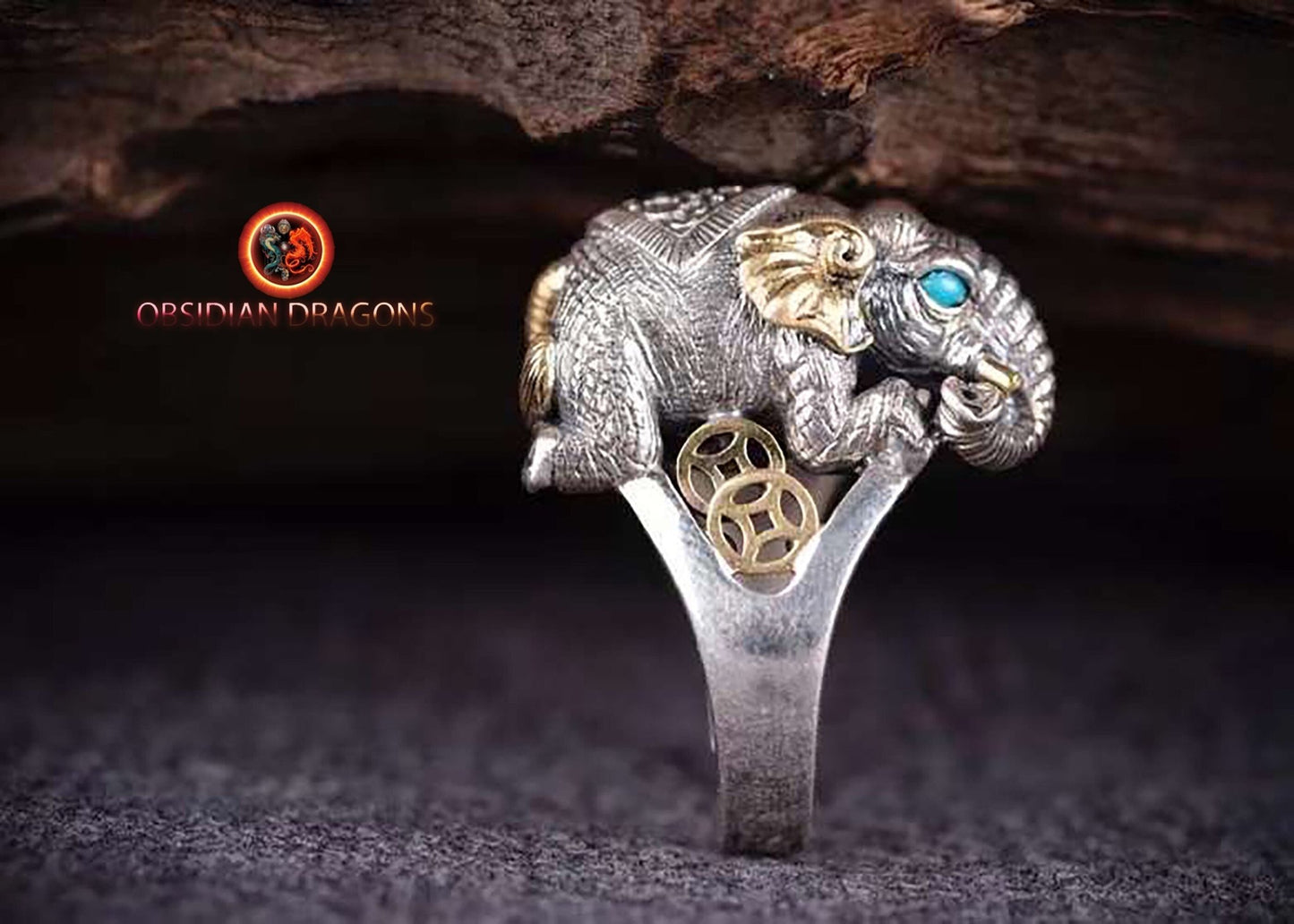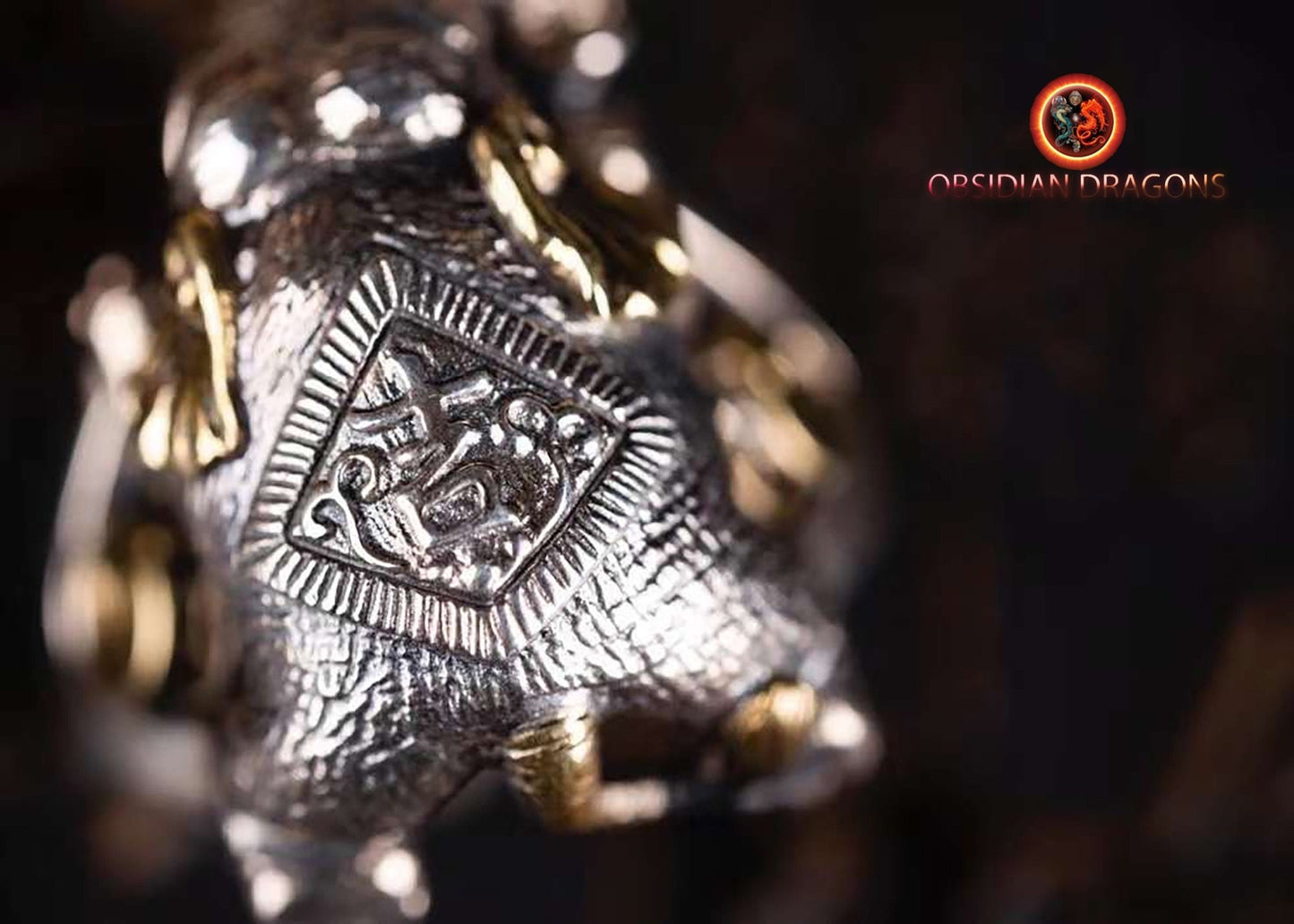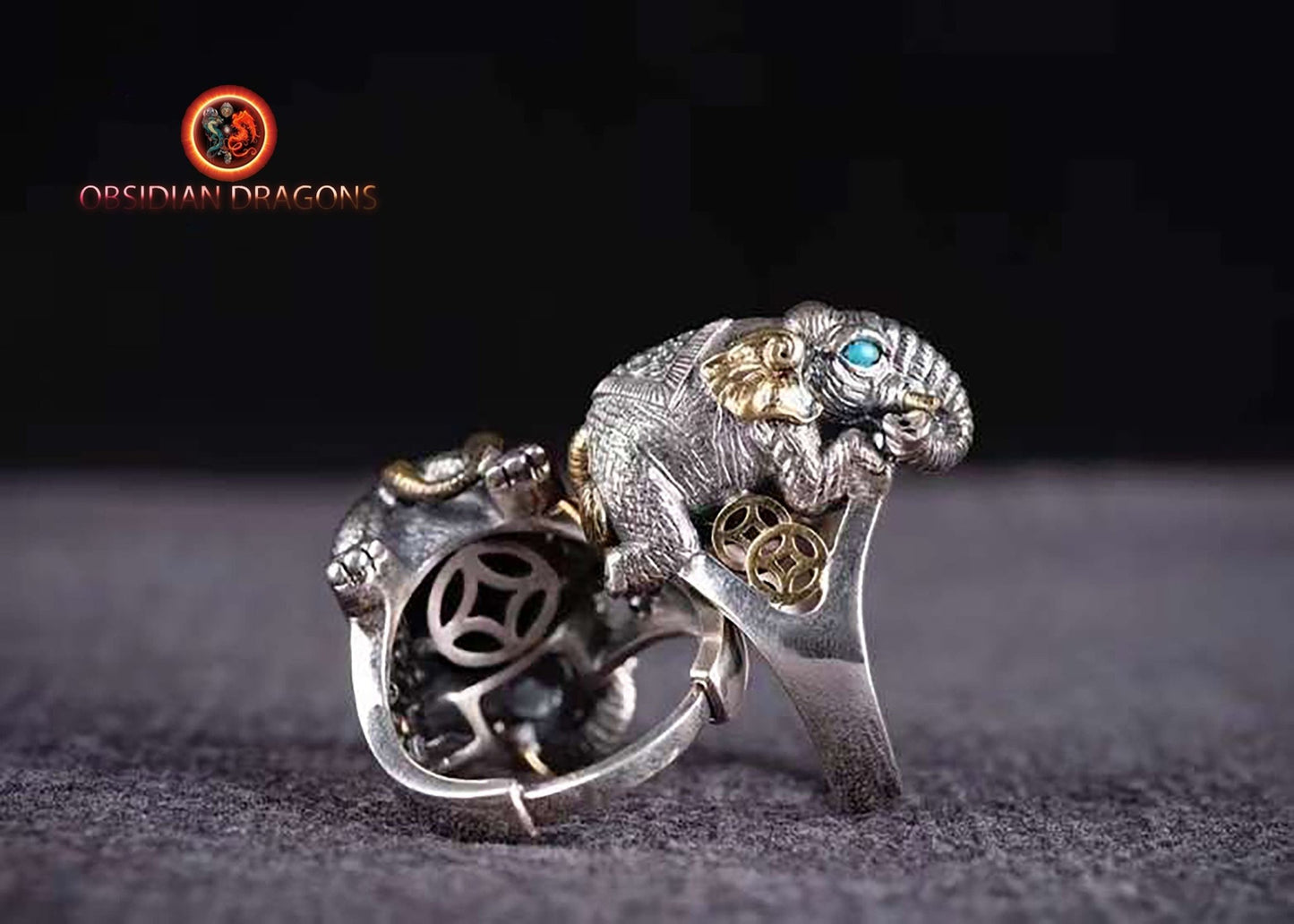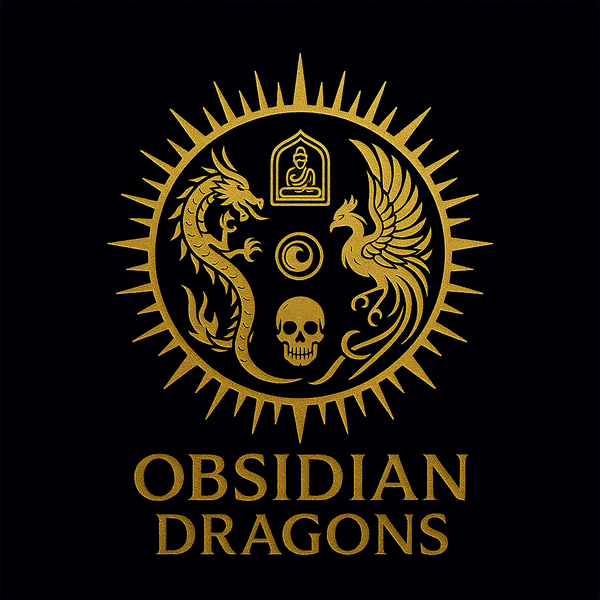AAA
Ganesh ring, the elephant god, 925 silver, choice of turquoises or nan hong agates, ring adjustable to any finger size, sliding.
Ganesh ring, the elephant god, 925 silver, choice of turquoises or nan hong agates, ring adjustable to any finger size, sliding.
Couldn't load pickup availability
Ring Ganesh, the elephant god (description below)
925 silver hallmarked according to current international standards
A choice of turquoise from Hubei province or nan hong agate (red from the south), this unusual volcanic agate owes its characteristic intense red color to its natural cinnabar content.
As a gemologist graduated from the National Institute of Gemmology in Paris, all our stones are appraised and certified.
Ring adjustable to all finger sizes thanks to a sliding clasp as shown in the 6th photo.
Dimensions of the ring: 24mm long by 21mm thick Weight of 21 grams.
GANESH
Ganesh in vajrayana.
One who removes obstacles. A legend says that a fight took place between the two ganesh, which the Buddhist won and tore off the head of the Hindu to replace his own.
More seriously, Ganesh was incorporated into Buddhism by his tantric form which originated in India in Odisha then traveled first to Nepal through Indian traders, and to China, then to Japan which we will talk about a little further down, the divinity having taken an interesting place in the shingon and tendai forms of Buddhism of the Archipelago.
The Elephant God Ganesh (or Ganesha/Ganapati, also sometimes called siddhi data) is one of the most popular gods of Hinduism and is also widely represented in the Temples of Theravada Buddhism (India, Thailand, Indonesia.. .) than in those of Vajrayana (Tibet, Nepal...) . I
He plays an important role in Tantrism and is present in the Tibetan pantheon where he is recognized mainly as a deity of wealth but is also part of the attributes of certain wrathful, somewhat frightening, terrible, secretive and fearful deities, removing obstacles.
Apart from Tibet, the deity has left few traces in China, no doubt swallowed up with the Chinese esoteric current Tangmi, centered on the Buddha Vairocana, who disappeared from 845, the date on which the full rise of Buddhism, its golden age between the period between the Sui and Tang dynasties extending from the beginning of the 7th century to 845 came to an abrupt end.
Emperor Tang Wuzong, of the Taoist faith, issues an edict against the Manichaeans, Buddhists and Nestorians, religions of foreign origin. After the persecution, only the Chan and Pure Land currents remain visibly. The typically Chinese esoteric Buddhism will nevertheless leave some traces, blending into the two surviving schools. Then, Tibetan Lamaism took the vacant place becoming an imperial religion under the Yuan dynasty, as well as the last dynasty, the Manchu Qing dynasty.
In short, the Tangmi or "secret art of the Tang" disappeared completely in China. Ganesh's Japanese name is Shōten (聖天) or Kangiten (歓喜天), Japanese Buddhism considers him to be a manifestation of Shō Kannon Bosatsu (聖観音菩薩). In Japanese, the kanji 天 is used as an equivalent of the Hindu Deva.
The cult of Kangiten began in Japan around the 8th-9th century. Importation due to Kukai (July 31, 774 - April 22, 835) scholar and official at the Japanese imperial court (early Heian period), holy founder of the Shingon esoteric Buddhist school, during his trip to China in 804 , in order to initiate the tantric form of Buddhism. There he met the eminent Buddhist scholar Pranja from the region of Gandhara, the cradle of the Mahayana or great vehicle, a region located in the northwest of present-day Pakistan.
Pranja, a former student of Nalanda, a prestigious center of Buddhist studies in northern India, was an important importer of Buddhist texts in China. After a trip of a decade in China, Kukai returned to Japan and introduced with his return, Tantric Buddhism and introduced several Hindu deities including Ganesh, thus founding the Shingon current, ensuring the survival of the Chinese Tangmi somewhere.
Then you have to go 3 decades after the death of Kukai better known as Kōbō-Daishi, to find the first texts concerning the cult of Ganesh / Kangiten in Japan.
The "Sho Kangiten Shikiho" or "Ritual of Sho Kangiten" composed around 861 detailing the various tantric rituals. In Japanese statuary and iconography, Kangiten is mainly represented in union with his consort, a female Kangiten, commonly called "Shakti" or "feminine energy".
These representations, erotic embrace, symbolizing the unions of male and female energies, widely used in tantric forms are called "Yab Yum". Just like the story of the Indian Ganesh, Kangiten began as a malevolent god who could create obstacles and therefore had to be worshiped in order to avoid trouble.
But over time, he became a Japanese god of joy and happiness. Ganesh is the god of wisdom, intelligence and prudence, among other patron saints of schools and teachers.
In Japan, as in Thailand, he is mainly invoked for wealth and financial success, prayed by merchants but is also the God of artists and all "creatives". Kangiten is considered to be endowed with great power, considered a protector of temples, and generally worshiped by players, actors, geishas, and people of the so-called floating world.
Due to Kangiten's esoteric sexual nature, her image is often obscured. Mantras are often prescribed in ritual texts to appease the deity and even to drive away this obstacle maker. Rice wine (sake), radishes (daikon), and "bliss-buns" (kangi-dan), a deep-fried confectionery filled with red bean paste that is based on the modak offered to Ganesha, are offered to the god.
The divine role of wealth is reminiscent of the Taoist form of the 10th century Chinese monk Milofo, who arguably took Ganesh's place in this role. It is the god who removes both material and spiritual obstacles for his worshippers. He is the son of Shiva and Parvati, the husband of Siddhi, success and Riddhi, wealth. The Buddhist Ganesh has his two tusks intact.
The Hindu ganesh has only one tusk, having broken one to write the vedas. Nowadays, 250 Japanese temples practice Kangiten worship, the most active center is Hozanji temple, located on the eastern slope of the eastern mount of Mount Ikoma outside Osaka city, founded by the charismatic Japanese monk in 17th century Tankai known as Hozan (1629- 1716). A legend surrounds the origin of the foundation of the temple.
Hozan's quest for supernatural powers or "siddhis" failed due to the insurmountable obstacles posed by Kangiten. Around 1678 the master of Tankai revealed to him the existence of Mount Ikoma, a miraculous place that is neither dream nor reality". On these revelations, Hozan, in order to appease the elephant god, made an idol of Kangiten to make him the guardian of the place by imploring him that in return the divinity will protect him and help him to reach the siddhis we date the construction of this temple around 1680
Share











Return conditions for a Zen purchase
We offer you a money back guarantee within 14 days after delivery of your order.
If you are not completely satisfied with your purchase, please contact us to arrange a return of the product and a refund.
Except for returns, shipping is free on all orders.
Multi-column
Button text-

100% secure payment
3 times interest-free option with Scalapay
-

Free delivery in France and internationally
14 days money back guarantee after delivery (see our conditions of sale)
-

Column
Excellent customer service
Live chat
Whatsapp +33674049312
Let customers speak for us
from 917 reviews4eme pièce que j'achète et encore une fois, jamais déçue de l'unicité et de l'originalité. Coup de cœur pour ce bracelet en magnifiques molaires de mammouth, charge de vie et d'histoire. Attention pour un tout petit poignet de fille comme le mien cela peut être trop grand. N'hésitez pas à poser la question à Jeremy sur les tailles, il répond toujours et il est très réactif.

Déjà j’au été très impressionné par la qualité du site web pour tout chercheur de vérité mais également pour la disponibilité de Jérôme qui a su dépasser mes plus grandes attentes pour la commande sur mesure d’un mala en Obsidienne Œil Céleste – Dragon & Bagua Feng Shui. Gràce à ce puissant talisman je peux désormais continuer ma route sereinement. Un très grand merci sincèrement.

magnifique, puissant et apaisant, il m'aide à garder mon calme je le trouve absolument parfait!

J'ai eu l'occasion de rencontrer Jérémy sur Paris avant l'achat...très bon contact avec lui ..il sait de quoi il parle...je suis revenu vers lui pour l'achat de cette magnifique statue...elle a été emballee avec beaucoup de soin pour une expédition de chine... vraiment très satisfait de cet achat..merci

Pendentif dragon en obsidienne œil céleste - Symbole spirituel

Le collier est superbe, et ce pendentif magnifique, ses détails! et l'odeur du bois de santal que c'est agréable! Qualité extra! Contact excellent avec Jérémy, merci beaucoup pour votre gentillesse! Quelle qualité, vivement le mala !

L'objet est très joli et malgré que je ne sois pas un spécialiste, je trouve que le crystal est beau. Il n'est pas parfait et cela me rassure sur la qualité du produit qui est sensé être naturel donc imparfait.
Très bien emballé et en plus housse de rangement offerte.
MERCI

J’ai commandé un crâne de dragon, il est super beau et très puissant. Je l’adore 😍 Et l’envoi a été très rapide 🤗 merci 🙏🏻

bracelet puissant, je suis content de mon achat

Cet artisan est gémologue, il travaille avec des artisans qui sont des vrais artistes, je suis bluffé par la qualité des ouvrages sur l’argent et sa qualité. Quand à la qualité des pierres pas besoin d’être gémologue pour voir la qualité exceptionnelle des pierres, encore une fois le travail de sculpture est exceptionnel.
Mon mala traditionnel est une pure merveille dans la tradition originelle. Le ghau est une merveille qui me comble.
Bref que dire de plus :). Allez sur son site.
PS : vendeur qui connait son métier et les traditions bouddhistes ce qui est un plus en plus :)

Ce crâne est un Etre de Lumière. Attirant , inspirant , "parlant".
Il est un Ami qui tire mes pensées vers le Haut.
Ses énergies vibrent à des fréquences élevées. Il est puissant dans la douceur.
Un crâne de Dragon m'assite également. Merveilleux !

Très beaux bracelet et très puissants

Magnifique crâne givré de l'Himalaya.

cette chevalière est tres bien réalisé, avec beaucoup de détails, je suis heureux de l'avoir














